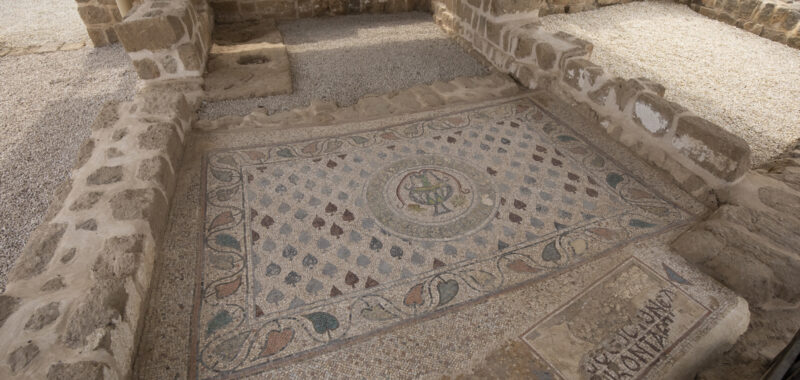The UNESCO World Heritage Committee has voted to add the 1,700-year-old Saint Hilarion Monastery in central Gaza to both its official World Heritage List and List of World Heritage in Danger. Also known as Tell Umm Amer, the site is the fifth in Palestine to be inscribed on the World Heritage List, which consists of 1,223 properties and structures across 168 countries.
The dual designations imply an international commitment by the World Heritage Convention “to avoid taking any deliberate measures likely to cause direct or indirect damage to this site … and to assist in its protection,” according to the announcement. The convention currently has 195 states parties, which include Israel and Palestine. The designations further underscore the present precarious state of Palestine’s cultural patrimony under Israel’s military’s ongoing assault on Gaza, which has killed upwards of 39,677 people and injured over 91,645 others since October 7.
Compounding this rising death toll, Israeli bombardments have destroyed scores of Palestinian cultural heritage and antiquities in Gaza — attacks decried by international human rights groups. In December, the Intergovernmental Committee for the Protection of Cultural Property in the Event of Armed Conflict granted the monastery site provisional enhanced protections following reports that it had been damaged from conflict. In January, 92 days after the start of Israel’s ongoing aggression, the Arab Regional Group at the International Council of Monuments and Sites stated that more than 60% of registered cultural heritage sites in Gaza had been destroyed by Israeli bombardments.
The Saint Hilarion Monastery is located approximately six miles (10 kilometers) south of Gaza City near Nuseirat, a municipality home to one of the eight refugee camps in the besieged strip. It is one of the oldest Christian sites in the Southwest Asia and North Africa region, established in the fourth century by Saint Hilarion, a monk considered to be the founder of Palestinian monasticism — a Christian movement involving the erection of monasteries throughout Palestine during the Byzantine period (330–1453 CE).

Situated in desert, the monastery was initially occupied by solitary hermits before evolving into a communal religious center. Due to its location on a major Christian pilgrimage route and several transcontinental trade courses, it was a popular transit stop and by extension, a convening point for different cultural, religious, and economic practices. The site is home to a plethora of intricate geometric, floral, and animal mosaics and features a combination of natural and architectural elements that date from the fourth to the eighth centuries, including an ecclesiastical center comprised of three churches, a massive crypt, and a refectory; and a hostel complex with adjoining thermal baths.
Abandoned in the seventh century following an earthquake, the Saint Hilarion Monastery was rediscovered by local archaeologists in 1999 and has since been the subject of several preservation efforts and advocacy campaigns. In 2010, emergency protective measures were initiated by a trio of groups in Gaza to shield it from heavy rainfall that threatened to destroy its mosaics and archaeological remains. In 2012, the cultural heritage advocacy organization World Monuments Fund included the monastery in its biannual listing of global heritage sites in need of protection.



